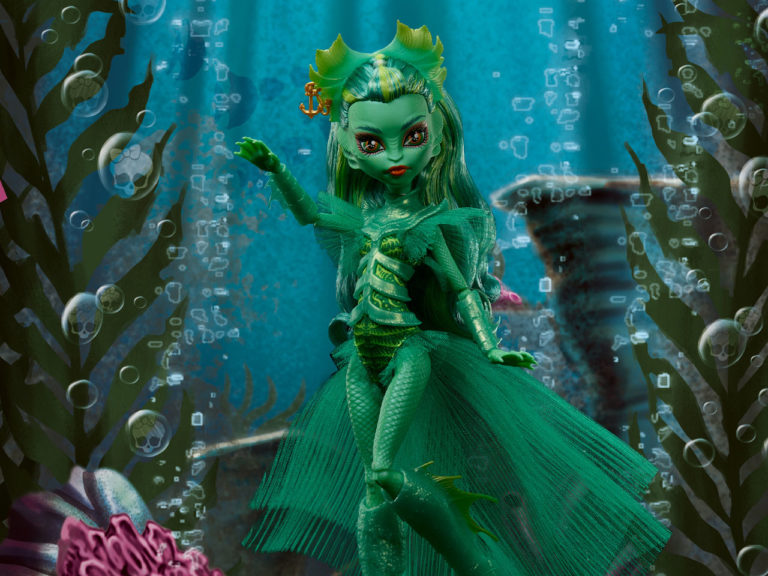
I first discovered Sorrentino on I, Vampire, and I became a fan of his work pretty much right away. I have been following him from project to project ever since. Lemire is one of those creators I have always had mad respect for, seeing as this guy writes a ton of books and even finds the time to illustrate a bunch of comics. But it wasn’t until these two creators joined forces on Green Arrow that I realized how they bring out the best in each other, and so I jumped at the opportunity to review Joker: Killer Smile, one of DC’s latest Black Label publications. Now, the question is, of course, is this book really that good and worth your time and money? Let’s have a look.

For those who are expecting to read a story that’s focused on Joker, I’d like to start off by saying that this is not that book. Instead, this story is centered around Ben Arnell, a psychiatrist working at Arkham Asylum who is trying to find a cure for Joker’s madness. Joker himself is more of a demonic entity in this, something that opposes Ben every step of the way and, at least in this issue, remains a mysterious force that Ben can’t quite figure out. That said, Joker’s portrayal is interesting. There are moments where I’d say he’s “typically Joker.” For example, at a certain point Ben is reading a children’s story to his son for bed, but the story takes a really dark turn and Ben decides to put the book away. Later, Joker recites passages from that very book to Ben, which indicates that there is definitely a personal connection between Joker and Ben. The question is, how did Ben get that book? And does this mean that Joker knows where Ben lives? Does he know anything about Ben’s private life? His family? Lemire and Sorrentino also manage to connect the children’s book incident to another one of Joker’s multiple choice origin stories—an idea that originates from Moore and Bolland’s The Killing Joke. Every time someone asks Joker where he comes from, he gives a different answer, and it’s never clear when he’s speaking the truth and when he’s lying.
Lemire and Sorrentino also fully embrace the horror side of Joker. Personally, I like Joker best when he’s mostly actually funny and I think that a lot of the darker iterations of the character are too edgy, thereby lacking the comedic elements that make the character so interesting to me. However, by keeping the character mostly in the background and barely letting him actually do anything (at least in this issue), it’s clear that casting Joker as a mysterious horror entity isn’t about the gore or the edginess at all. In fact, this is about how Ben’s mission to find a cure for Joker affects his own mind, and not only is this an interesting angle to take, but this is also where the real horror comes from.

Ben, who is a nice dude with a loving wife and a son, is rapidly descending into madness. For some, this descend might be just a tad too rapid, because within the pages of this issue, we quickly see Ben having a complete psychotic break that involves a lot of in-your-face gory hallucinations that probably aren’t for the faint of heart. However, I think that hard-hitting visuals like these don’t need a lot of build-up. They hit hard precisely because they take us by surprise when we flip the page. Besides, there is plenty of foreshadowing going on in the early pages of this book.
People are worried about Ben, including his supervisor and his wife. Joker and Ben’s supervisor both ask if his reasons for wanting to cure Joker’s madness are egoic. At first Ben tells them that that isn’t the case, but later he finds himself asking his wife if she thinks he’s doing this for the right reasons. This indicates that Ben isn’t entirely sure anymore why he’s still doing this, but one thing that’s abundantly clear is that, for some reason, he can’t stop. Furthermore, his supervisor is warning Ben that the other psychiatrists who came before him all succumbed to madness, and his wife is telling him that he’s been behaving off for a week. These are all signs that the sh*t is going to hit the fan sooner rather than later. Despite all this, Ben still tries to come up with excuses for why he should go on. But what it is exactly about Joker that has him so obsessed is a question that we are yet to get answers to (if at all), and this is precisely what has me so intrigued.

Then there is a sequence where we see Ben getting up in the middle of the night, and he’s surrounded by a purple aura, and he turns out to be heading toward his home office, which happens to have a green door. These are of course Joker’s colors, and I feel like this is meant to show how obsessed Ben is with his Joker case. A few panels later, just as Ben wants to step through the door, his wife flicks on the lights and she’s fully dressed. It turns out that it’s 8 AM and she’s getting ready for work. Passages like these show how the barriers between reality and hallucination are breaking down, and it’s a cool supplement for typical superhero action. Even though this deals with hallucinations, everything feels more grounded, probably because it seems more plausible to me that someone suffers from such heavy hallucinations than that people dress up in flashy costumes to then beat each other into the ground (although, to be fair, we do see Joker wear his tuxedo and we even catch a glimpse of Batman punching out a couple of the clown’s teeth).
The artwork in this comic is, as expected, out of this world. What’s really exciting to me is that this time, Sorrentino’s pencils are colored by Jordie Bellaire, whose artwork I’ve always admired. What strikes me about the colors in this book is how bright and varied they are, while still maintaining the freaky psychological terror vibes that Lemire and Sorrentino are probably going for. Yet, at the same time, the colors also blend nicely. You almost don’t notice how varied Bellaire’s palette is until you start paying attention to it.

Sorrentino himself is absolutely killing it, and this is quite remarkable seeing as he’s working on Gideon Falls with Lemire at the same time as this book. I don’t feel like any of the panels are rushed. In fact, Sorrentino puts in lots of details. For example, the book opens with a shot of Gotham’s skyline—we see many skyscrapers and streets below a few balloons that are floating in the air. Sorrentino also makes great use of page layouts to make the reading experience more dynamic. The different panel sizes put emphasis on certain actions—for example, when a page is filled with smaller panels it makes a scene more claustrophobic, whereas bigger panels can reveal shocking imagery that’s supposed to be completely overwhelming to Ben. One thing that I wish Sorrentino had done differently is to have kept Gotham’s gothic aesthetic intact. In an interview I read in the back of a different DC issue, Sorrentino explained that he stripped Gotham of this aesthetic to give the book more of a real world feeling. And while his rendition of Gotham in this story is still fine, I just miss the gargoyles and the zeppelins, because now it seems more like a generic big city to me, rather than the city that we all know and love.
Recommended if…
- You have just watched the Joker movie and want to pick up a great, new Joker comic.
- You are a fan of this writer/artist duo (seriously, check out their other stuff as well, from Green Arrow to Old Man Logan to Gideon Falls—you can’t go wrong!).
- You are into psychological horror stories in which any gory visuals are in service to the psychological aspect.
Overall: I have thoroughly enjoyed this first issue of Joker: Killer Smile. Ben’s descend into madness might happen a bit too quick for some, but I actually like how the story sets Ben up as someone who has been struggling with internal conflict for a while because he has been working on this Joker case. I also like the fact that this first issue raises more questions than answers, because it builds a lot of suspense and makes me hungry for the next issue. Furthermore, Sorrentino and Bellaire create beautiful visuals that keep me engaged throughout, from the grounded conversations between characters to the eerie hallucinatory sequences to the claustrophobic encounters with Joker. I’ve had a blast reading this from start to finish—I just wish Sorrentino had kept the gargoyles and the zeppelins, because as amazing as this story is, it just doesn’t exactly feel like Gotham to me. Still, I highly recommend this book. Enjoy!
Score: 9/10
Disclaimer: DC Comics provided Batman News with an advance copy of this comic for the purpose of this review.


